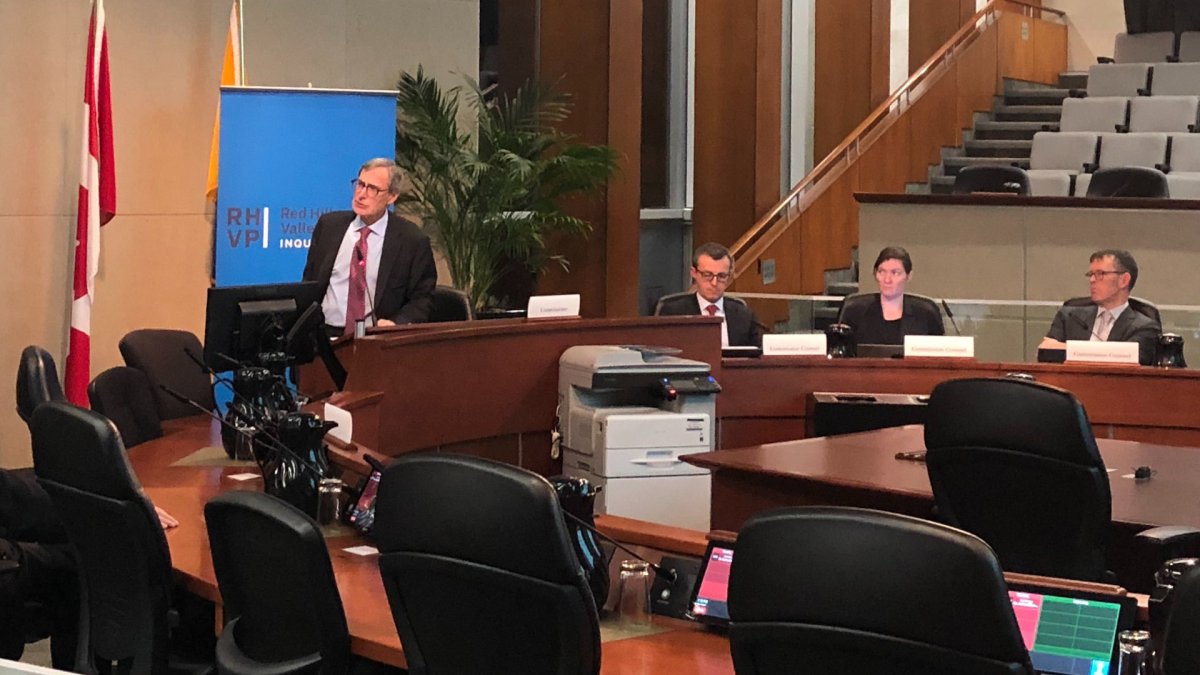The Red Hill Valley Parkway Inquiry (RHVPI) took its first steps on Thursday night with a public meeting at Hamilton City Hall with commissioner Justice Herman Wilton-Siegel presiding.

Close to 50 members of the public heard Wilton-Siegel explain the nature of the investigation and the long road ahead before it would reach a ruling and recommendations.
“Currently, commission counsel is conducting an investigation, collecting documents and assembling information,” Wilton-Siegel said in his opening statement.
“This work will last a number of months. After that, the inquiry will examine the evidence in public hearings, and the conclusions of the inquiry will be set out in a report, which will be made public.”
The commissioner also made it clear in his opening statement that the inquiry is “not a trial.”
“No one is charged with criminal activity; no one is being sued.”
Wilton-Siegel was appointed to head the judicial inquiry in May 2019, which is looking into unanswered questions about the 2013 Tradewind Scientific report that revealed troubling safety findings involving the parkway’s surface.
The commissioner said the inquiry’s mandate will be divided into two stages. First, the inquiry is to determine the facts relating to 24 questions posed by city council, which fall into five general categories:
- Why the 2013 report on the Red Hill Valley Parkway (RHVP) and the Lincoln M. Alexander Parkway were not revealed to city council or the public
- Why testing from the Ontario Ministry of Transportation (MTO) on the RHVP in 2007 was not disclosed to city council or the public
- Whether the city or MTO conducted any other friction tests or general road safety reviews of the RHVP
- What the standards for friction testing in Ontario are
- Other than friction, what other factors contribute to motor vehicle accidents on the RHVP
The second stage will be road safety recommendations from the inquiry in the interest of the public and government, according to Wilton-Siegel.
On Friday, the commissioner hears from nine speakers and will decide whether they will be allowed to participate in the inquiry during the investigation process.
Wilton-Siegel will hear from the city; the province; Dufferin Construction, which built the parkway; Golder Associates, which commissioned the Tradewind friction study; a former city accountant; crash victim Jodi Gawrylash; and Belinda Marazzato, the mother of Olivia Smosarski, who died in a collision on the parkway.
Representatives from two law firms, Grosso Hooper and Scarfone Hawkins, will close out Friday’s session.
The firms represent a group involved in a $250-million class-action lawsuit filed on behalf of drivers who have crashed on the parkway since its opening in 2007.
The lawsuit states that over 2,000 vehicles have lost control on the road in the past 12 years, leading to either single- or multiple-vehicle crashes as a result of the city’s “negligent design, construction and maintenance” of the parkway.
None of those claims has been proven in court.
Robert Centa, the commission counsel for the inquiry, says that the nine submissions will have to prove that they have value for the forthcoming probe.
“We established rules that relate to the applications to participate and seek funding. And those rules set out a number of criteria for that the commissioner will consider in determining these applications,” Centa told Global News.
“So this is a chance for them to present their case in light of those criteria and to persuade the commissioner that they should be eligible to participate in the inquiry process.”
Centa expects the commissioner will release decisions in February on which of the nine will join the inquiry.
The 2013 Tradewind Scientific report, which analyzed friction levels on the parkway and recommended a “more detailed investigation” and “possible remedial action” to enhance the surface texture and friction characteristics of the parkway, was reportedly buried for five years.
The audit also revealed that friction values were “below or well below” U.K. safety standards, which were used as a benchmark in the study.
The report came to light in 2018 when the new director of engineering services came across the Tradewind study and its recommendations for “further examination of the pavement surface, composition and wear performance” and “more investigatory work.”
In February 2019, the City of Hamilton issued a public apology for the buried report and followed up in March by asking a superior court judge to investigate the matter with a public inquiry. The city then allocated $7 million to cover the costs.
Wilton-Siegel has not set a specific timeline for when the inquiry will be completed. Formal public hearings are not expected until fall 2020.





Comments